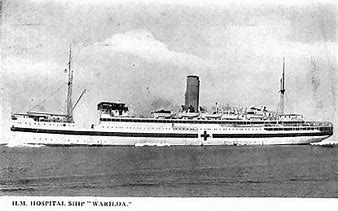Hospital ship sinking that shocked the nation remembered 100 years on

A Southampton-based maritime charity will lower its flag to half-mast today (3 August) to commemorate the sinking of a hospital ship 100 years ago, which caused outrage across the nation when it was torpedoed in the English Channel, killing 123 people.
His Majesty’s Australian Transport (HMAT) Warilda was transporting hundreds of wounded soldiers from the French port of Le Havre to Southampton when, despite being clearly marked with the Red Cross, it was struck by a single torpedo from a German U-boat.
Upon impact the ship’s starboard propeller was disabled, the engine room flooded and the steering gear obliterated. Unable to steer, the Warilda continued moving in a circle at 15 knots – making it difficult for those on board to escape in lifeboats.
The ship remained afloat for almost two hours before sinking into the channel.
Probably the most prominent of the lost was Violet Long OBE, the Deputy Chief Controller of the Queen Mary’s Army Auxiliary Corp (QMAAC).
Violet was the last woman to leave the stricken ship, having made sure the QMAAC staff in her care were safely off.
One of those, Charlotte Allen Trowell, told reporters at the time: “I shall never forget the end of Mrs. Long who had been so kind to me. She clung to the boat into which I had been dragged and I caught hold of her by the hair.
“She exclaimed ‘Oh save me. My feet are fastened. I have lost a foot.’ Her feet had become entangled in some rope. Strenuous efforts succeeded in freeing her limbs and a Southampton sailor tried hard to get her into the boat, but she collapsed suddenly, fell back and was drowned.”
Violet’s body was never recovered; she is commemorated at Southampton’s Hollybrook Memorial, along with those lost at sea in the tragedy.
Before it sank, Warilda had carried more than 70,000 troops and wounded and in 1919 the ship’s Captain, James Sim, from Sydney, was awarded the OBE by King George V.
www.sailors-society.org/200-years/










